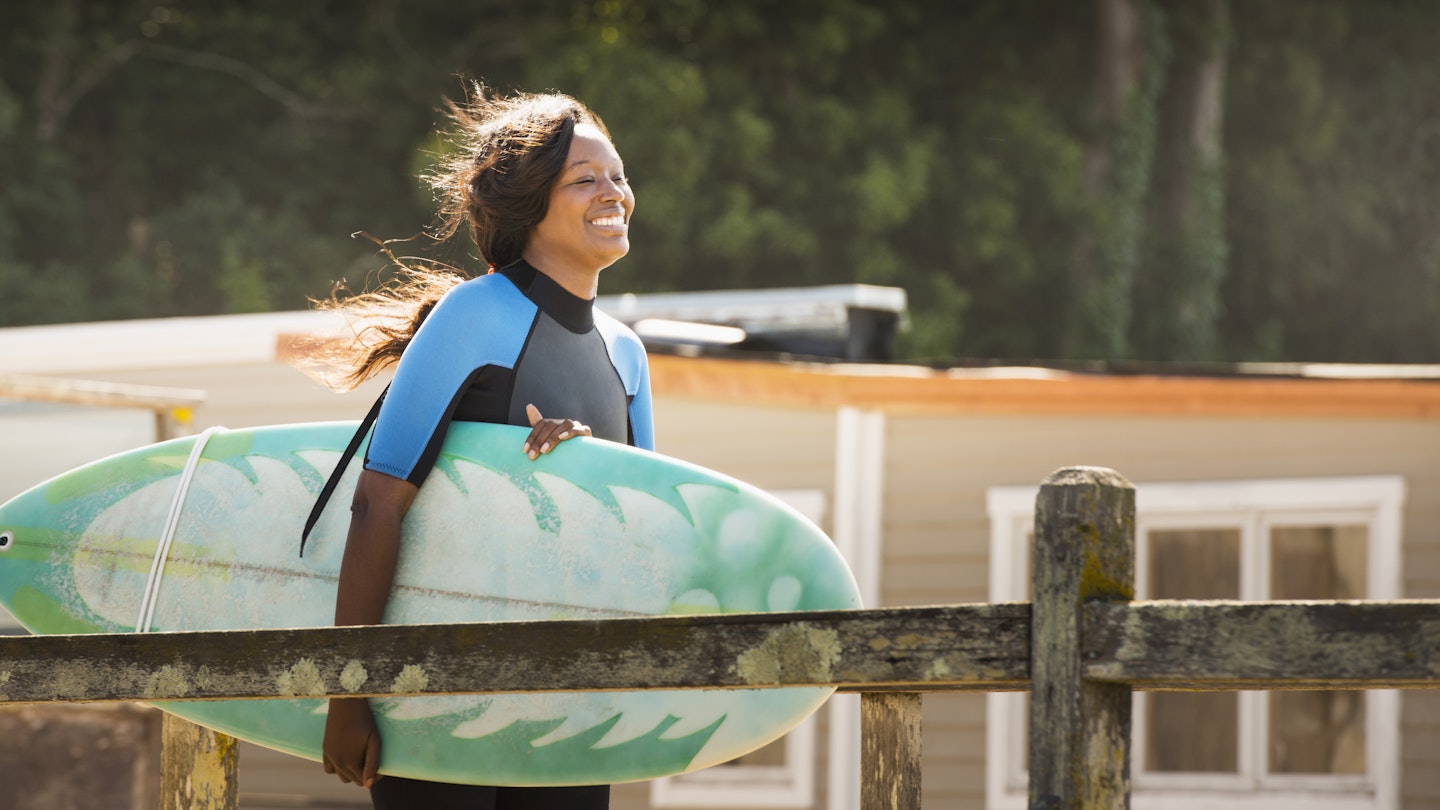Hawaii might lay claim to the first waves ever ridden, but surf culture was born in California. Whether it’s the salt-washed hair of the Lords of Dogtown, the tunes of the Beach Boys or the legendary Endless Summer crew, the cultural impact of California on wave chasing is undeniable, backed by numerous breathtaking surf locations.
An 840-mile coastline stretches the length of the Golden State, starting with the sun-scorched deserts on the Mexican border all the way to the swaying redwoods of the Sonoma Coast. In this vast stretch of coast are some of the planet’s most iconic breaks, offering everything from monstrous waves to mellow longboard breakers that embody the power of the Pacific Ocean.
Surfing Etiquette in California
When surfing in California, it’s essential to follow certain etiquette rules. Give way to the surfer closest to the peak of the wave, never drop in on waves already occupied by another surfer, and always maintain control of your board.
Moreover, it’s crucial to select surfing spots that match your skill level. Some of California’s most powerful waves can appear deceptively easy, as seen at Trestles, which attracts many surfers but can be more challenging than it looks due to its shifting peak and barreling sections.
Furthermore, localism can be a concern in certain areas. While places like Lunada Bay in Los Angeles County are well-known for it, many locations experience similar situations. To avoid confrontation, it’s best to steer clear of localism hotspots and remain calm and polite.
The Best Time to Surf in California
California truly is the land of endless surf, with different seasons offering unique wave experiences along the coast. Generally, fall and winter present the best conditions for surfing. Southern California (from Los Angeles to San Diego) benefits from Santa Ana winds, which are offshore during these seasons, allowing large swells from the northwest Pacific to light up breaks like Trestles and Blacks.
This time of year is also great for spots like Santa Cruz and Mavericks, where wrap-around swells deliver powerful waves.
In the summer, don’t fret; south-facing points like Malibu thrive during this season, specifically on smaller days when locals gleefully break out their longboards for leisurely rides.
Trestles: A Trio of Legendary Breaks
Trestles is celebrated as one of California’s premier surf spots. Known for its impeccable breaks, Trestles hosts three zones: Uppers, Lowers, and Middles. Particularly, Lowers is the prized wave, offering rides in both directions with steep walls of peeling water.
Getting to Trestles is straightforward: exit Interstate 5 at San Onofre State Park, about 50 minutes north of downtown San Diego.
Blacks Beach: San Diego’s Surf Playground
Blacks Beach is a 2.5-mile stretch of pristine surf territory, positioned near Torrey Pines State Reserve. This area is characterized by an offshore canyon that expertly directs groundswells into superb waves. The central A-frame wave captures attention as surfers navigate the beach.
To reach Blacks Beach, travel along the Saigon Trail from La Jolla Farms Road, or take the Torrey Pines Gliderport Trail from the main parking lot, both taking just over 10 minutes off I-5 north of San Diego.
Mavericks: For the Daredevils
Mavericks is infamous for its massive waves, peaking at over 25ft during winter swells. This grave task was first conquered by local surfer Jeff Clark in 1975, marking Mavericks as a spot for only the most adventurous surfers.
The unique underwater rock formation causes a surge of power that erupts just south of San Francisco. The left and right breaks here are lightning-fast and generally unpredictable.
To access Mavericks, travel to Half Moon Bay, specifically from Pillar Point Harbor, roughly 30 minutes south on Cabrillo Highway from San Francisco.
Malibu: The Heart of SoCal Surf Culture
Malibu has been a sanctuary for surfers since the 1920s. By the 1950s, the area became synonymous with surfing legends like Miki Dora. Following the release of Gidget in 1959, Malibu’s wave-riding destiny was solidified.
The area boasts numerous renowned surf spots, including Surfrider Beach and Zuma Beach, attracting eager surfers year-round.
Getting to Malibu is quite convenient, as the Pacific Coast Highway connects most beaches along this coastline.
Rincon: Perfect, Peeling Point Breaks
Rincon is considered one of the premier point breaks globally, located between Ventura and Santa Barbara. It’s renowned for its sculpted right-hand waves suitable for competitions.
Rincon Point can be accessed from the 101 just south of Carpinteria.
Santa Cruz: The Birthplace of Surfing in the Golden State
In 1885, Surfing arrived in California as three Hawaiian princes introduced it to Santa Cruz. This town would evolve into a World Surfing Reserve, boasting 10 named breaks.
Steamer Lane is Santa Cruz’s standout, famously known for its barreling sections that cater to intermediate and advanced surfers.
Swami’s: The Longboarder’s Dream
Swami’s is a renowned surf spot that attracts longboarders thanks to its exceptional right-hand reef break. Low tide yields the best conditions here, providing waves that can roll back to the sand for extended rides.
Getting to Swami’s is straightforward. It’s located in Encinitas, about a 30-minute drive up I-5 from San Diego.
The Wedge: An Unruly Beast
The Wedge at Newport Beach is notorious for its challenging and chaotic breaks. This jetty creates unpredictable wave conditions, making it a battleground for experienced surfers.
To reach The Wedge, set your GPS to “E Ocean Boulevard” at the tip of the Balboa Peninsula, roughly 40 minutes from Downtown LA.




